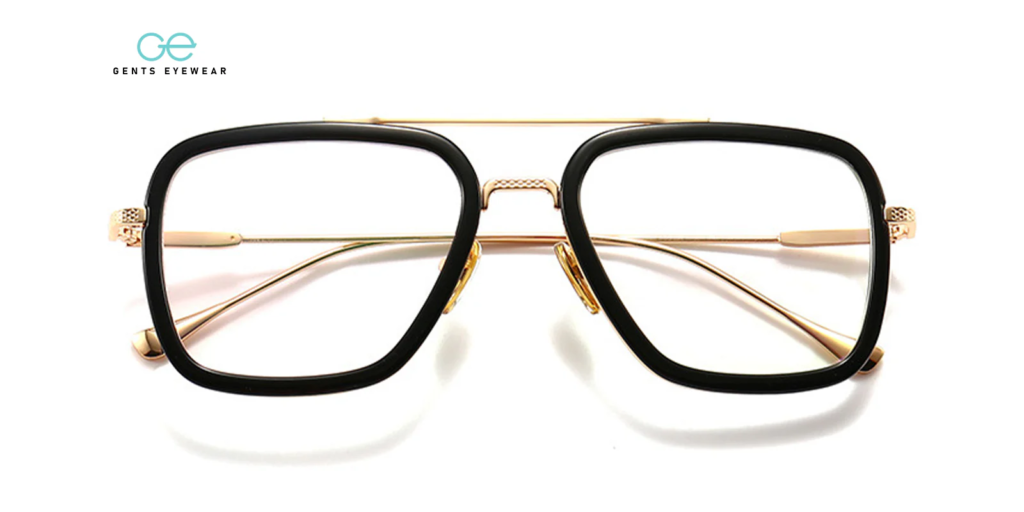When you get a prescription for glasses, the numbers and symbols on it may confuse you. Don’t worry, this article will help you understand the various parts of a glasses prescription so that you can better understand your vision condition and the glasses power you need.
Table of Contents
Basic components of glasses prescription
Glasses prescriptions usually consist of several parts, including sphere power, cylinder power, axis position, pupil distance, etc. Let’s introduce the meaning of each of these parts.
Sphere (S)
The sphere power is used to correct myopia or hyperopia. If the sphere power on your prescription is a positive number, it means you have hyperopia; if it is a negative number, it means you have myopia.
For example, +2.00D means 200 degrees of hyperopia, and -3.50D means 350 degrees of myopia.
Cylinder (C)
The cylinder power is used to correct astigmatism. Astigmatism is caused by the irregular shape of the cornea or lens of the eye, which prevents light from focusing on one point, resulting in blurred vision.
Cylinder power can be positive or negative, with positive numbers indicating hyperopic astigmatism and negative numbers indicating myopic astigmatism. For example, -1.00DC indicates 100 degrees of myopic astigmatism.
Axis (A)
Axis refers to the direction of astigmatism. It is usually expressed in degrees, ranging from 0 to 180 degrees.
For example, an axis of 90 degrees means that the direction of astigmatism is vertical.
Pupillary Distance (PD)
Pupillary distance refers to the distance between the centers of the pupils of the two eyes. An accurate pupil distance is very important for making suitable glasses because it determines the position of the optical center of the lens.
Pupillary distance is usually expressed in millimeters. For example, PD = 62mm means that the pupil distance is 62 millimeters.
How to interpret an eyeglass prescription
Now let’s look at a specific example of an eyeglass prescription to better understand how to interpret these numbers and symbols.
| Project | Right Eye(OD) | Left Eye(OS) |
|---|---|---|
| Sphere(S) | -2.50D | -3.00D |
| Cylinder(C) | -0.75DC | -1.00DC |
| Axis(A) | 180 D | 175 D |
| Pupillary Distance(PD) | 60mm |
- Right eye prescription interpretation
The spherical power is – 2.50D, which means that the right eye has 250 degrees of myopia.
The cylindrical power is – 0.75DC, which means that the right eye has 75 degrees of myopic astigmatism.
The axial position is 180 degrees, which means that the direction of astigmatism is horizontal.
- Left eye prescription interpretation
The spherical power is – 3.00D, which means that the left eye has 300 degrees of myopia.
The cylindrical power is – 1.00DC, which means that the left eye has 100 degrees of myopic astigmatism.
The axial position is 175 degrees, which means that the direction of astigmatism deviates slightly from the horizontal direction.
- Interpretation of pupil distance
The pupil distance is 60mm, which means that the distance between the centers of the pupils of the two eyes is 60 mm.

The Importance of Prescription Eyeglasses
Correcting Vision Accurately
Prescription glasses are custom-made to fit your specific vision needs. They are designed to precisely address common vision problems like nearsightedness, farsightedness, and astigmatism. Here’s how they help:
- Nearsightedness (Myopia): Prescription glasses shift the focus of light so distant objects become sharp and clear.
- Farsightedness (Hyperopia): They help nearby objects come into focus, reducing eye strain when reading or working up close.
- Astigmatism: Specially designed lenses correct blurry or distorted vision caused by irregularities in the shape of the cornea or lens.
Wearing glasses with the wrong prescription can lead to issues like blurry vision, eye strain, headaches, or even a decline in vision quality. That’s why getting an accurate eye exam and wearing the right glasses is so important for clear and comfortable vision.
Protecting Your Eye Health
Prescription glasses aren’t just about seeing clearly—they also play a big role in keeping your eyes healthy and reducing risks associated with eye strain or vision problems:
- Reducing Eye Fatigue: Spending long hours in front of a computer or reading can strain your eyes. The right prescription glasses can ease this strain, allowing you to work or read comfortably for longer.
- Preventing Worsening Vision: For children and teens with nearsightedness, wearing glasses can help reduce the progression of their condition by easing the workload on their eyes.
- Improving Safety: Clear vision lowers the risk of accidents, especially during activities like driving or sports. Wearing glasses tailored to your needs ensures you can respond to your surroundings more effectively.
- Correcting Astigmatism: Astigmatism can cause blurry or distorted vision, leading to discomfort and fatigue. Prescription glasses can enhance your overall visual clarity and make daily activities more enjoyable.
Protecting your eyes isn’t just about glasses—healthy habits like taking screen breaks, staying hydrated, and eating a balanced diet also play a role in long-term eye health.
Enhancing Quality of Life
Good vision impacts nearly every part of your daily life, and prescription glasses can make a significant difference in how you experience the world:
- Easier Reading: Whether it’s books, work documents, or your phone screen, clear vision makes reading and staying focused easier and more enjoyable.
- Safe Driving: Sharp vision is essential for spotting road signs, pedestrians, and hazards while driving. Glasses tailored to your prescription ensure safety and confidence on the road.
- Enjoying Sports and Outdoor Activities: Whether you’re hiking, playing tennis, or just exploring nature, clear vision helps you focus on the activity and enjoy it to the fullest.
- Reducing Screen Fatigue: Spending hours on screens can tire your eyes. Glasses with the right prescription—and possibly a blue-light filter—can help reduce strain and make screen time more comfortable.
Clear vision improves your productivity, safety, and enjoyment of life. Prescription glasses allow you to focus on what matters most without worrying about blurry or strained vision.

How to Choose the Right Prescription Glasses
Choose a Reputable Optician or Eye Clinic
When buying prescription glasses, it’s essential to select a trusted optical shop or eye clinic to ensure the glasses are high quality and the prescription is accurate. Here’s why:
- Professional Services: Reputable stores or clinics have certified optometrists and opticians who can provide precise eye exams and expert guidance for selecting the right glasses.
- Reliable Products: These places typically use high-quality lenses and frames, ensuring better durability and performance for your glasses.
Don’t compromise on quality—an accurate prescription and well-made glasses are key to maintaining your vision and comfort.
Select the Right Lenses and Frames
Choosing the right lenses and frames is about balancing your vision needs with your personal preferences.
- Lenses: Your lens choice should match your specific vision requirements. Some common options include:
- Single Vision Lenses: Ideal for correcting nearsightedness, farsightedness, or astigmatism.
- Bifocal Lenses: Combine distance and near vision correction in one lens.
- Progressive Lenses: Offer a seamless transition between distance, intermediate, and near vision zones.
- Frames: Your frame selection should consider factors like:
- Face Shape: Different frames complement different face shapes (e.g., round, square, oval).
- Skin Tone: Frames that contrast with your skin tone can create a balanced and stylish look.
- Personal Style: Whether you prefer bold, classic, or minimalist designs, choose a frame that reflects your personality.
- Proper Fit: Ensure the frame matches your pupillary distance (PD) so the optical center of the lenses aligns with your eyes for clear vision.
Pay Attention to Quality and Comfort
Quality and comfort are crucial when selecting prescription glasses. Glasses that don’t feel right can cause discomfort and may even impact your vision negatively.
- Lens Quality: High-quality lenses offer excellent optical clarity and are often more durable and resistant to scratches.
- Frame Durability: Frames made from sturdy materials, like titanium or acetate, tend to last longer and hold their shape better.
- Comfortable Fit: When trying on glasses, look for these features:
- Lightweight Frames: Heavier glasses can feel uncomfortable after prolonged wear.
- Properly Sized Temples: The temples (arms of the glasses) should fit snugly but not pinch behind your ears.
- Well-Fitted Nose Pads: Adjustable nose pads can help the glasses sit comfortably on your face without slipping or pressing too hard on your nose.
Test the glasses by wearing them for a few minutes to ensure they’re comfortable and fit well without causing pressure on your face or head.
Important Considerations for Prescription Glasses
Regular Vision Checkups
Your vision changes over time, which makes regular eye exams essential to ensure your glasses match your current prescription. Here’s what you need to know:
- Frequency of Checkups:
- Adults should have their vision checked every 1-2 years.
- Children and teenagers, whose eyes are still developing, should have an eye exam every six months.
Regular checkups help detect changes in your vision early, allowing you to update your glasses as needed for optimal clarity and comfort.
Keep Your Prescription Safe
Your glasses prescription is an important document—it provides the exact details needed to create lenses tailored to your vision needs.
- Why Keep It Safe?
- If you need to replace your glasses or buy a new pair elsewhere, having your prescription ensures accuracy and convenience.
- It serves as a record of your vision changes over time, helping eye doctors better understand your visual health.
Store your prescription in a secure place and consider keeping a digital copy for easy access.
Take Care of Your Glasses
Proper care can significantly extend the life of your glasses while maintaining their clarity and comfort. Follow these tips:
- Avoid Damage:
- Protect your glasses from impacts, scratches, and exposure to high temperatures, which can warp or damage the lenses and frames.
- Always store them in a sturdy case when not in use.
- Regular Cleaning:
- Clean your glasses with a microfiber cloth and lens cleaner to remove smudges and dust without scratching the lenses.
- Avoid using harsh chemicals or rough materials that might damage the lens coating.
Well-maintained glasses not only last longer but also provide consistently clear vision, improving your overall experience.
In conclusion, understanding eyeglass prescriptions is very important for choosing the right prescription glasses. By understanding the meaning of each part of an eyeglass prescription, you can better understand your vision condition and the glasses degree you need. At the same time, choosing a regular eyewear store or eye hospital, paying attention to the quality and comfort of the glasses, regularly reviewing your vision, properly keeping your eyeglass prescriptions, and paying attention to the maintenance of your glasses can help you get better vision correction results, protect your eye health, and improve your quality of life.



